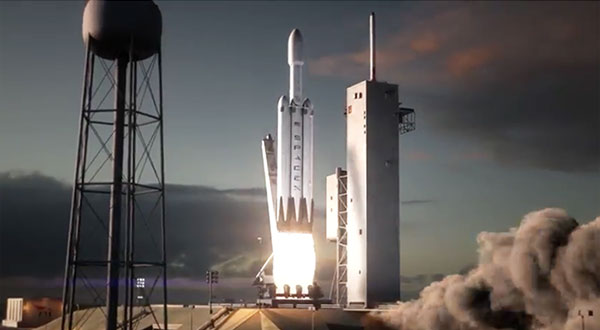SpaceX this week failed in its third attempt to land a rocket on an ocean platform.
The company has landed a reusable rocket successfully on land, but it has stepped up its efforts to land at sea.
The latest attempt, though not successful, was a step forward, SpaceX said.
It began at Vandenberg Air Force Base in California. The Falcon 9 rocket was supposed to deliver its payload, its primary objective, and then land on a drone ship out in the Pacific Ocean.
The rocket stuck the landing, touching down within four feet of the ship’s center, but it touched down too hard and broke a leg as a result.
Maybe Next Time
While the landing was not a success, the rocket suffered much less damage this time around. It’s a step closer to an ocean landing, and the folks at Space Florida are confident SpaceX will get it right, said Dale Ketcham, chief of strategic alliances for Space Florida.
“It is harder to do than the success they recently achieved at [Cape Canaveral], and that was far from easy,” he told TechNewsWorld.
“This effort will continue to drive down the costs of expanding the Earth-bound economy out into the solar system. With the energy and resources available out there to feed this economy, we might be able to give Mother Earth a break,” Ketcham said.
A sea landing isn’t necessary, but it could be helpful. “If recovery can be achieved at sea, then more boosters can be returned to service, thus again lowering costs for all,” he said.
Sea landings are more suitable for rockets returning at higher velocities, SpaceX CEO Elon Musk said.
Many payloads on SpaceX’s manifest will require different orbits, which will make it harder to return boosters, Ketcham noted.
Meet Jason-3
The rocket boosted its payload — the Jason-3, or Joint Altimetry Satellite Oceanography Network, satellite — into orbit without issue.
The satellite will beam down atmospheric data gathered from measuring sea levels to the U.S. National Oceanic and Atmospheric Administration, NASA, French space agency Centre National d’Etudes Spatiales, and the European Organisation for the Exploitation of Meteorological Satellites, according to SpaceX.
It will aid in forecasting the intensity of hurricanes, El Nio, La Nia, surface waves, and tides and currents for commercial ships. Researchers also will use the satellite to model coastal areas to aid efforts to preserve reefs and other marine animals.
Room for Space
The commercial spaceflight industry has been fighting for the right kind of attention, the type that doesn’t tip trade secrets or undermine investor confidence. The fact that leading businesses and executives are behind the current push into space is generally good news, said Charles King, principal analyst for Pund-IT.
“They’ve replaced the often turgid bureaucracy of NASA with an entrepreneurial energy that has delivered on a number of once-unimagined achievements, including making the running of supplies to the International Space Station a viable business,” he told TechNewsWorld.
While they make for some stunning YouTube clips, developments in space exploration are more than a marvel of modern science. They create new ways to help us understand life back on Earth, King noted.
“As it becomes increasingly common and affordable, it will also inspire a broad range of new commercial products and services,” he said.
Another reason to get behind the commercial space flight industry is because it reflects “who we are as a society,” King added.
“The space-aimed efforts of the 1950s, ’60s, ’70s, and ’80s reflected a broader sense of national purpose and visionary optimism,” he said. “That seems to be in short supply today, replaced by the melodramatic dumbassery of small-minded politicians and science-phobes.”





















































I don’t see any silver lining yet. Investors have to be asking when exactly is the bugs going to get worked out? And when if ever will recovery be even close to having a solid success rate? Almost doesn’t cut it, and your talking about more failures then success.